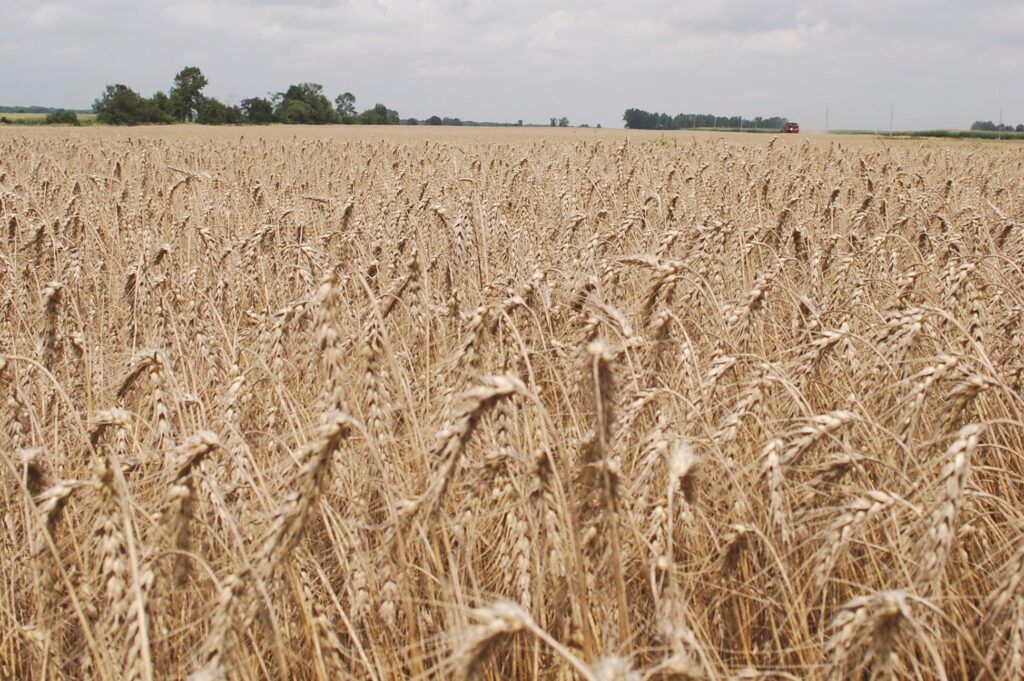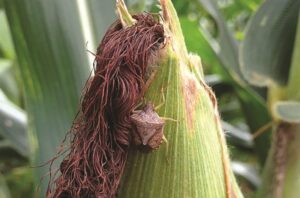Introducing GM wheat
ARGENTINE VARIETY RECEIVES APPROVAL IN BRAZIL AND PARAGUAY

IN 2021, THE GLOBAL WHEAT MARKET FIRST HEARD THE NEWS ABOUT A DROUGHT-TOLERANT WHEAT VARIETY developed and registered by Bioceres Crop Solutions, a company based in Argentina. It was finally going to happen; after years of talk about research into different technologies by BASF, Bayer, and Syngenta — among other efforts — the world was going to see its first genetically modified (GM) wheat variety, registered as HB4.
The challenge? It first had to garner the approval of Brazil, Argentina’s leading export market for wheat, and that hurdle has now been overcome.
Despite the three-year timeline, HB4 has been in development for more than 20 years since a research group of the Litoral Agrobiotechnology Institute, known as CONICET-UNL, discovered the sunflower hahb-4 gene-activated plant response mechanisms to abiotic stress. Furthermore, the group found that gene could be transferred to other plants, including wheat and soybeans, to activate the same mechanism.
“This kickstarted 20 years of further research and public-private collaboration, which led to the development and commercialization of HB4 technology,” says Martín Mariani Ventura, global seed and trait licensing manager with Bioceres Crop Solutions. The proof of concept was developed by Dr. Raquel Chan in 2005, and the first field trials were conducted in 2008. “Final event selections were made in 2012 for wheat based on yield and molecular data. Our first regulatory submissions took place in 2014.”
HB4 wheat is approved in 11 of the largest wheat-producing markets and is the world’s only available drought-tolerant wheat technology. Mariani Ventura adds that the complex genome structure of wheat provided some significant challenges, which is partly why the regulatory submission took place nearly 10 years after proof of concept.
Yet in spite of any consumer reluctance to genetic modifications in wheat, changes in food security and demands for higher productivity in the face of drought have meant shifting attitudes.
“We’re seeing signs today that people understand more about GMOs and that opposition to them is easing,” says Ventura, citing a recent survey in Brazil. “It found that 72 per cent of consumers did not have any problems eating GM wheat. The survey also showed that 57 per cent knew what a genetically modified food was and 73.4 per cent were aware that they consume genetically modified foods.”
Abimapi, an association representing biscuit, pasta, bread, and cake makers in Brazil, was initially against GM wheat, yet the organization changed its stance after the survey. Bringing technologies to wheat was a must because it is one of the world’s staples, and that’s been reflected by HB4’s approval for food and feed use in Australia, Columbia, Indonesia, New Zealand, Nigeria, South Africa, and Thailand.
AN INEVITABILITY, BUT …
Consumer acceptance in North America has been slow, in spite of the U.S. acceptance of GM enhancements and developing drought- tolerant varieties. Drought has become an issue in areas of Texas, Oklahoma, and Kansas, yet concern over consumer backlash has created barriers to bringing GM varieties to market in the U.S. and Canada.
Quentin Martin, Co-owner of Cribit Seeds near Kitchener, is aware of the impediments to genetic modifications in wheat. Although growers understand the advantages of GM corn, soybeans, and canola, several issues continue to impede the progress of wheat’s acceptance.
“The majority of growers in Ontario are already engaged in the use of transgenics,” says Martin. “That’s the larger question, and most producers would be aware of the societal or consumer acceptance and understand that’s what matters.”
He used to get defensive about trying to explain the differences between transgenics or genetic mutations, adding that particular battle in the 1990s didn’t fare well for agriculture. However, even with gene editing, the emerging issue for the average consumer is their tolerance for artificial intelligence.
“It may hinge more on the sense of the intrusion of technology and their lives in general,” says Martin. “Their lack of control may have more influence but how society at large will respond to things, I’m at a loss to figure it out.”
The other issue he mentions is the use of farm- saved seed, causing a lack of investment in the development of cereal varieties. To move things forward, it needs the participation of growers and industry.
DIRECT FOOD SOURCE
Despite the inevitable nature of GM wheat’s acceptance, Scott Krakar maintains the major stumbling block for domestic acceptance, not just among consumers, is by processors and millers.
“The overwhelming response today is ‘No’ – millers in developed nations are not interested in GM wheat,” says Krakar, grain merchandiser with London Agricultural Commodities. “There is too much negative connotation and fears from consumers for millers to be interested in GM wheat. Wheat products already have a segment of the population advocating against gluten consumption, and cereal companies face negative media with glyphosate residue detection, resulting from pre-harvest burndown applications discovered in trace amounts.”
Such a marketing challenge is not what millers and food companies want.
It’s not that the industry is completely against genetically modified wheat, adds Krakar. In many cases, it makes perfect sense, especially in developing nations. Even wheat production in Argentina could see an expansion with the adoption of the HB4 variety, where grower production risks are mitigated as crop production becomes more predictive with inclement weather conditions.
“This is potentially the opening of the door of GM wheat, assuming customers buy the foodstuff produced,” says Krakar, noting it also depends on the traits produced. “Drought tolerance, for example, would be more beneficial to Western Canada, but if there were a trait that could prevent fusarium or in-field sprouting, growers in eastern Canada would be very adoptive.” •


























